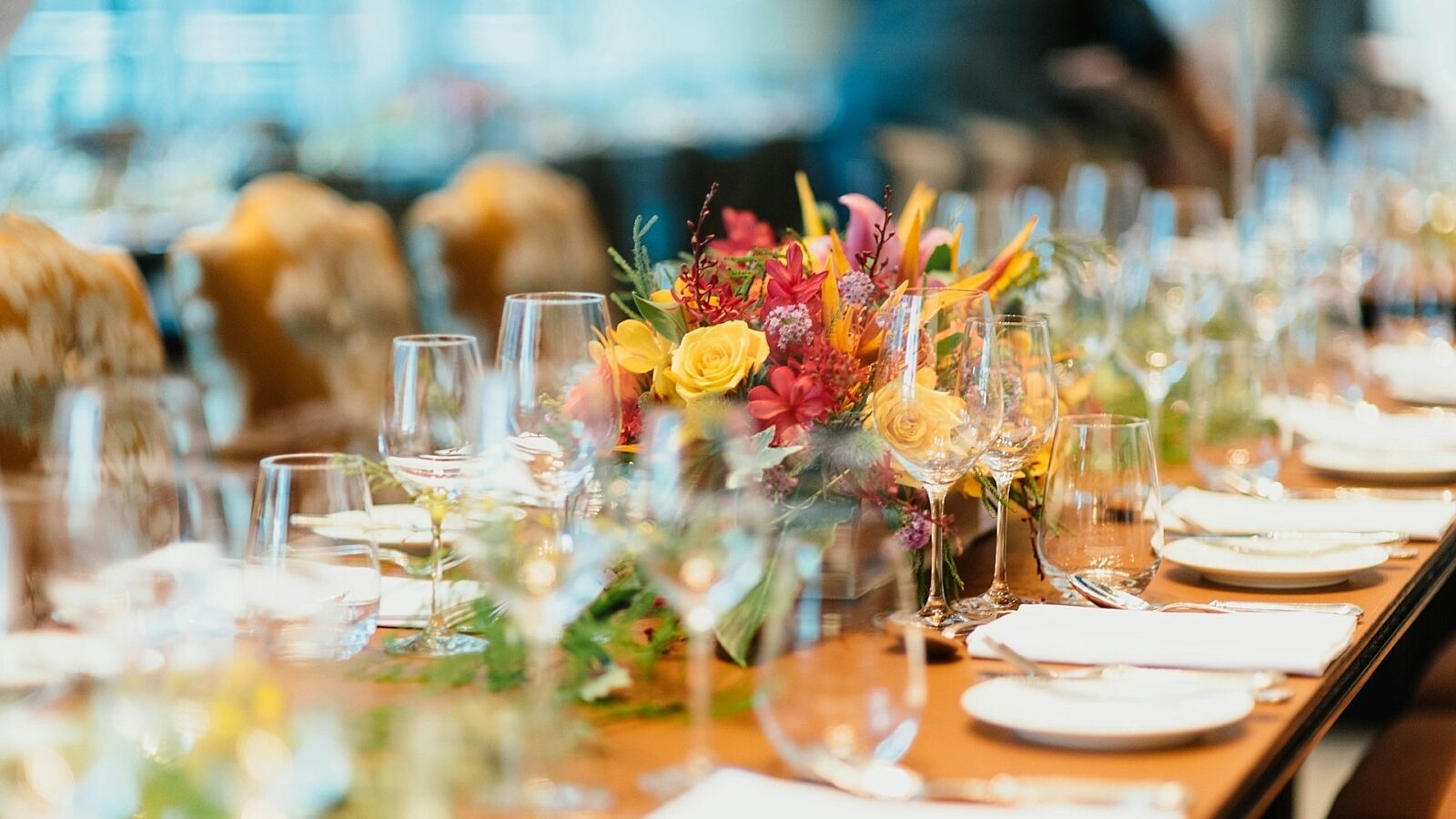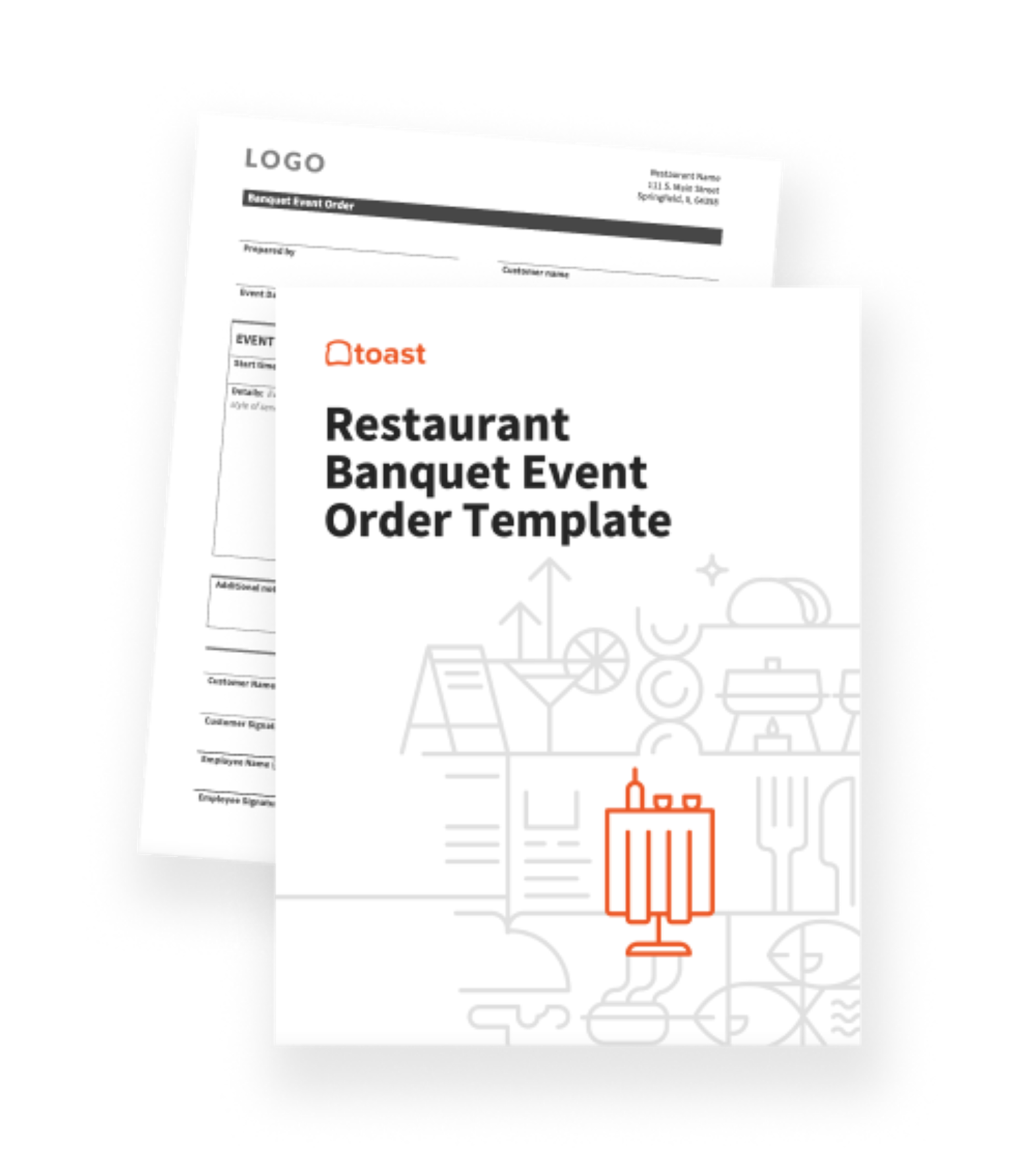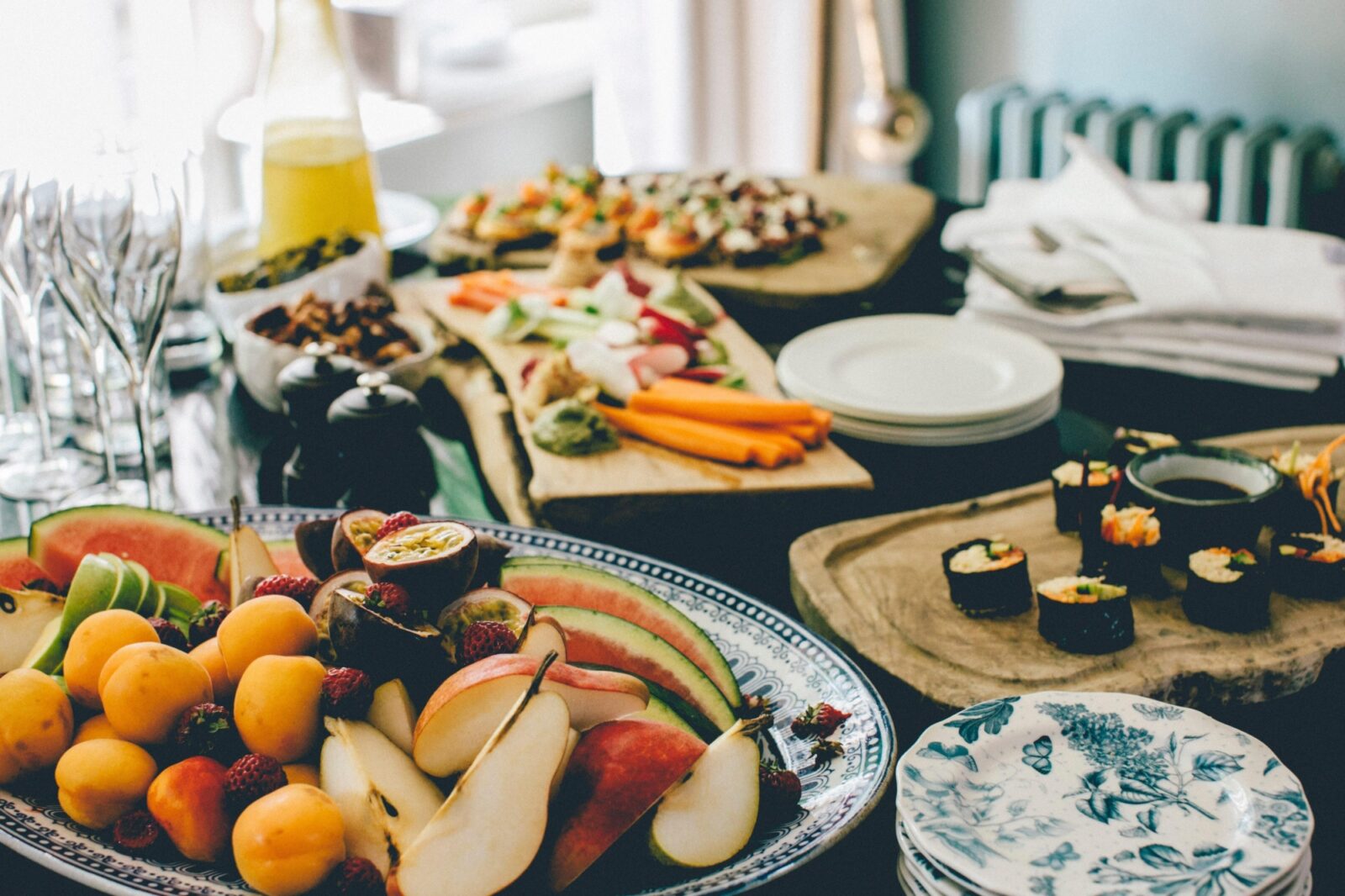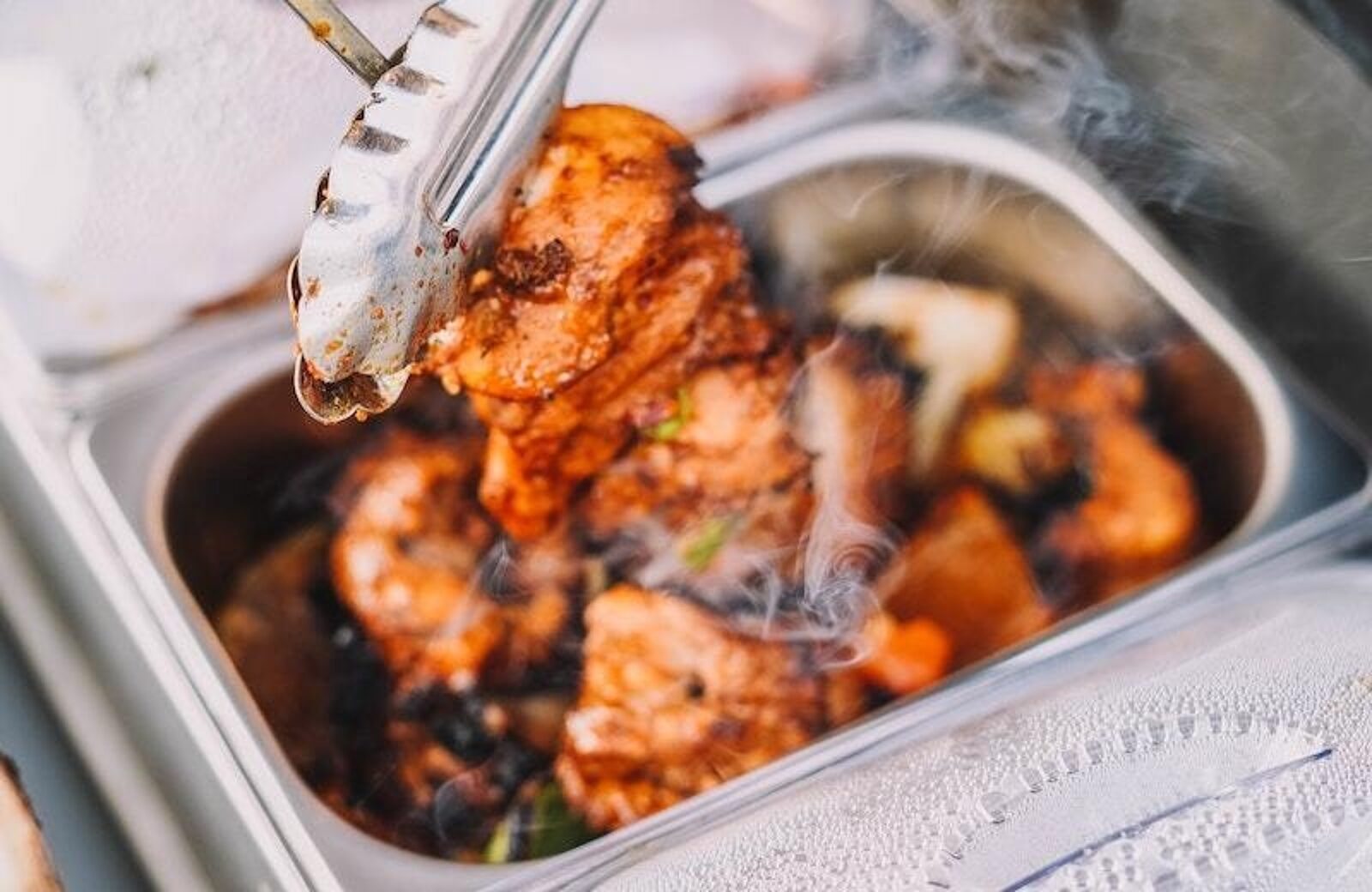
Catering Pricing: How Much To Charge For Catering
Everything to Know About How to Charge for Catering in 2024.
Grace JidounAuthor


Restaurant Banquet Event Order (BEO) Template
This free BEO template can help your restaurant optimize incoming catering requests and streamline documentation.
Get free downloadIf you’ve ever snacked on bite-sized wagyu sliders at a party or eaten from appetizer spoons at a corporate event, you’ve experienced the power of catering — a $12 billion-dollar-per-year industry that employs 275,000 people. With all signs pointing to increased demand, the future of catering looks bright.
The biggest challenge for modern caterers is not about crafting a menu or even finding clients — it’s pricing. With the rising cost of food and the sheer variety of events, pinpointing how to price a menu properly requires careful planning. If you overprice, you may lose customers and your competitive edge. If you underprice, your business could end up being unprofitable.
In this article, we break down all the information you need to know about pricing — from typical catering expenses to the most popular pricing structures and the best ways to approach pricing for your unique business.
Restaurant Cost Control Guide
Use this guide to learn more about your restaurant costs, how to track them, and steps you can take to help maximize your profitability.

Understanding Your Costs
No one said running a catering business was easy, but there are industry tips and tricks that make the process substantially smoother, which we’ve gathered together in our 2024 Guide to Running a Catering Business. Here, we take a closer look at the costs involved.
Food and Ingredients
There’s no denying social media has upped the ante for the catering world. Gone are the days of boring dish buffets filled with overcooked pasta and lukewarm chicken. Now, you might see catered dessert displays at children’s birthday parties or elaborate oyster stations with designated shuckers at a gala event.
Walking that profitability tightrope is trickier than ever, and each event will be different. Instead of one-size-fits-all food pricing, you need to consider portion size, menu items, and any special dietary requests that could impact ingredient costs. For instance, smart caterers always include at least some gluten-free or vegetarian options to accommodate requests on the fly.
Labor
Beyond the food, the second most important pricing consideration is the staff. Let’s say you are passing trays at a cocktail party. A good rule of thumb is one server per 20-25 people and at least one staffer to prep. On the other hand, an elegant sit-down dinner for a small group of 12 might call for two servers and a busser. A buffet for 100 might require three attendants and four bussers, with a captain to orchestrate it all. You will want to carefully calculate the labor costs for each event, including the wages of chefs, servers, bartenders, and any other workers.
Overhead Expenses
Commercial kitchen rental, utilities, liability insurance, marketing costs, and technology are all essential elements of a catering business. Just like with any restaurant, there is a serious infrastructure and business plan behind the scenes.
Equipment and Rentals
Catering companies often offer more than just food. Clients turn to caterers to fulfill all their party needs, including chairs, tables, serving trays, glassware, serveware, and specialty items like those little appetizer spoons. For dining experiences that are more daunting to execute (think live fire cooking), you will need to factor in grills, barbecues, and any specialized cooking equipment. Offering the whole shebang — including setup and breakdown — distinguishes the good from the great caterers.
Transportation
If only everything magically appeared on site with the snap of our fingers. You will be expected to deliver all the equipment, accouterments, and food to the event location, which might require vehicles equipped with refrigeration (or at least a large truck). Don’t forget to factor in gas costs as well.
Mynor Espinoza, the catering coordinator of Gus’s World Famous Fried Chicken, is acutely aware of skyrocketing food and gas prices yet tries his best not to pass on the costs to customers. “Even though food costs are going up, we try to keep catering prices the same by drawing in clients who have large orders. It’s a balance,” he says. “A larger event that calls for big half-pans of chicken is better for us than doing multiple small plates throughout the day.” To attract those big catering jobs, Espinoza offers clients a complimentary gift card to one of their five restaurant locations in California.
Restaurant Operations Manual Template
Use this free template to easily outline all of your operating procedures and make day-to-day operations as consistent as possible.

Factors to Consider When Deciding Catering Pricing
Market Research and Competitive Analysis
The food is the magnet that lures all the guests to the table. So, what lures the clients to the caterers? Now that you understand the costs involved, conducting market research and a thorough competitive analysis is crucial. Establishing yourself in a dynamic industry requires knowing what your rivals are doing to attract business and, most importantly, what holes in the market they are not filling.
The first step is to research local caterers, which might require some good old-fashioned detective work. Contact area caterers to find out what services they offer and their pricing structure. The next step is to hone in on your target market. Are you aiming for weddings, black-tie galas, low-stakes backyard parties, or corporate events? Dream big! There are plenty of ways to launch a catering business without a huge sum of money.
Desired Profit Margin
Catering isn’t afforded the same attention as restaurants. Still, it can be just as profitable and influential. Sure, you would like to bank four figures for every event (and maybe you will), but it’s important to be realistic when landing on the amount of profit you want to make. Our best advice is to aim for a profit margin that allows you to cover your costs, reinvest in your business, and generate a reasonable amount of earnings.
Event Specifics
Event type: These days, there is no foolproof all-purpose plan for special events. Different types of gatherings require varying levels of service, menu, options, and staffing. While most successful caterers have set menus geared toward specific categories — elegant celebrations, casually passed appetizers, grand events for 50 — the key lies in having options and add-ons so each event feels tailored to the client.
Guest Count: For a caterer, nailing down the guest count, or at least getting a close estimate, is the number one priority. It’s an essential aspect of your planning and needs to be monitored as it can change within days or even hours of your event. The number of guests impacts everything, from food and beverages to staffing.
The Complexity of the Menu: The food at catered events should reflect menu trends in the larger restaurant world. In today’s world, this means local and/or organic ingredients and global flavors. Caterers are being asked to craft more elaborate menus than ever before, which can profoundly affect overall pricing. Before saying yes to that request for a sea scallop crudo or white nectarine tartlet, research the seasonality and availability of your ingredients, as prices fluctuate throughout the year.
Location and Venue: Say someone approaches you about a cocktail party with light appetizers for 50, and then the next words are “on the beach.” Suddenly, you are thinking about shade, pop-up tents, how to transport equipment across the sand, and keeping that sand out of the food. Pricing a beach event is a whole different ballgame than a backyard soiree. Location matters.
Client Preferences and Customization: These days, it’s all about customization, which is pretty much the opposite of old-school catering. The assembly-line system of days past has given way to a more personalized approach, one that can incorporate special requests, dietary requirements, and cultural considerations — which all impact pricing.
Pricing Methods for Catering
The key to pricing success will be the detailed strategy before the event. You gathered as much information as possible about party particulars and what costs you may incur. Now, it’s time to evaluate different pricing structures and figure out how much to charge for catering.
Tiered Pricing
This method involves offering different levels or packages of service at various price points. For instance, a basic tier could include a no-frills menu, while the top tier could cover a 5-course tasting menu with a full bar. A tiered strategy allows you to cast a wider net, attracting clients with different budgets and party preferences.
Per-Person Pricing
Just as straightforward as it sounds, this method is sometimes called “fixed” pricing (not to be confused with fixed menu pricing), where you charge a flat fee for each guest that typically covers food, drink, and service.
À La Carte Pricing
This pricing structure allows clients to customize their experience by hand-picking specific menu items and services. It speaks to clientele who desire a unique event or want more control over the details, as it provides the most flexibility and transparency of all the pricing structures. It’s also beneficial to the caterer, as it’s a perfect opportunity to showcase add-on menu items or premium services that can enhance the event. Remember - with à la carte, you will need extra time to prepare your quote.
Fixed Menu Pricing
Just like a restaurant menu, caterers often offer fixed-priced menu items that don’t change according to the size or style of the party — an excellent fit for themed events or for clients who prefer a straightforward selection process. To many clients, fixed pricing seems the most “honest” because it’s easier to predict the cost of ingredients, keep labor costs down, and streamline planning when the menu items are essentially always the same.
Catering Menu Templates
Use these catering menu templates as a starting point for your menu design or to give your menu a refresh.

Factors to Consider When Deciding Catering Pricing
Market Research and Competitive Analysis
You might be tempted to skip this step since we covered many aspects of catering pricing so far. However, market research and competitive analysis are critical to understanding your audience and the demand for your unique services. It’s time to aim for your target: customers who throw parties and events. The process entails researching your audience, understanding the local catering market, and then assessing your competitors' pricing strategies.
Determine Your Desired Profit Margin
In short, this is the profit you want to make from each catering event. You want to aim for enough profit to cover your costs, reinvest in your business, and generate a reasonable profit. It may not always be the same margin. To get an idea, a typical return lands around 7% to 8% in the catering industry.
Communicating Your Pricing to Clients
Key to the success of your catering business is gaining the trust of your clients and inspiring repeat business and referrals. The cornerstone of all relationships — business or personal — is communication. People value transparency in business dealings, so be upfront about what’s included in your pricing, and that means full transparency around any additional charges that pop up. When submitting your written proposal or quote, the more detail the better when it comes to descriptions of the services, the menu options, and the costs associated with each item.
Regularly Review and Adjust Pricing
From a dozen eggs to a gallon of gas, price fluctuations are becoming the norm lately, and with each spike in food costs or hot new catering trend, you want to readjust your pricing accordingly. Wedding caterers, for example, are often booked a year in advance and change their original quotes to reflect inflation.
Your primary job is caterer extraordinaire, but you’ll need a side hustle as a low-key financial analyst, monitoring food costs, analyzing the market, seeking feedback from clients, and staying on top of all catering and restaurant trends. The information you glean will help as you regularly adjust your pricing strategy to remain competitive and on target to meet your profitability goals.
In many ways, catering is a labor of love. You are in it for the love of creating special moments and memories for others. It's easy to get caught up in the excitement of orchestrating an event without realizing your costs are spiraling out of control. Careful planning and pricing strategy will put you on the path to profitability so that you can reap the rewards of all your hard work in the future.
Is this article helpful?
DISCLAIMER: This information is provided for general informational purposes only, and publication does not constitute an endorsement. Toast does not warrant the accuracy or completeness of any information, text, graphics, links, or other items contained within this content. Toast does not guarantee you will achieve any specific results if you follow any advice herein. It may be advisable for you to consult with a professional such as a lawyer, accountant, or business advisor for advice specific to your situation.
Read More
Subscribe to On the Line
Sign up to get industry intel, advice, tools, and honest takes from real people tackling their restaurants’ greatest challenges.


